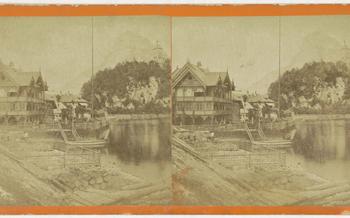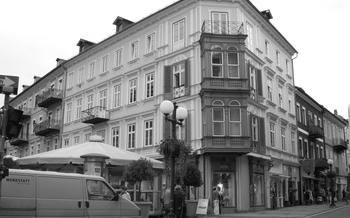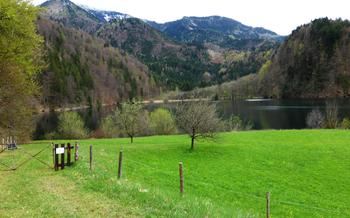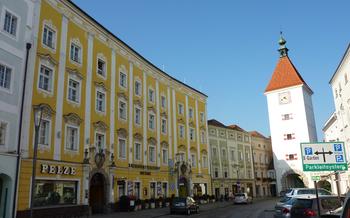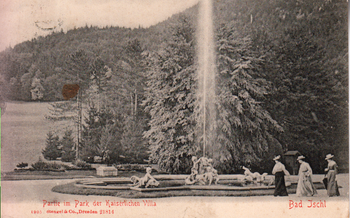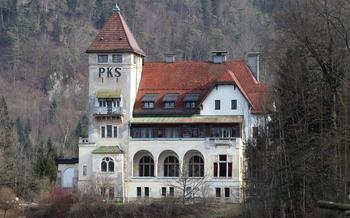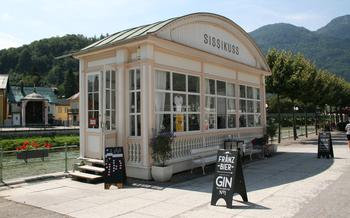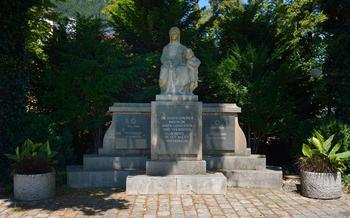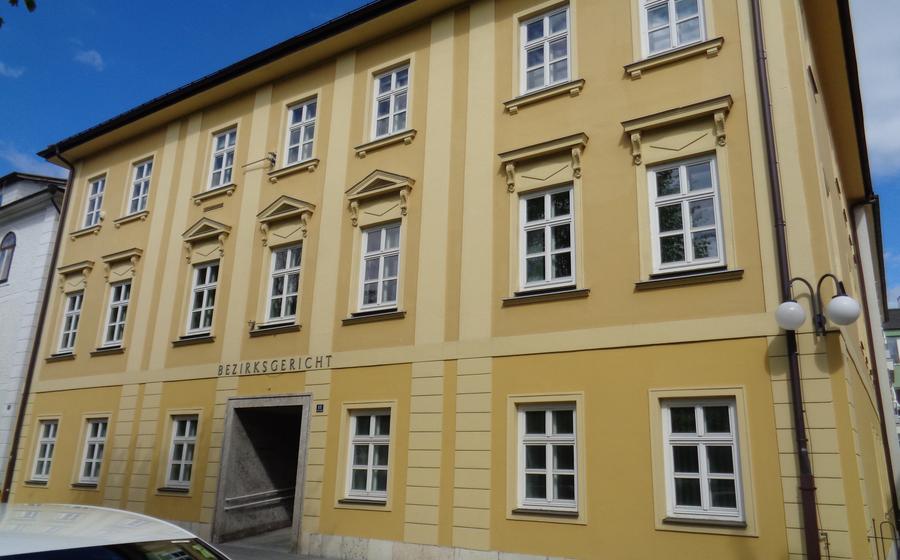
Gössl Traditional Clothing Museum
- Gössl Traditional Clothing Museum: A Journey Through Austrian Fashion and Culture
- Location and Accessibility
- Hours of Operation and Admission Fees
- Exploring the Exhibits
- The History of Traditional Austrian Clothing
- Craftsmanship and Techniques
- Regional Variations
- Cultural Significance
- Interactive Experiences
- Engaging Visitors of All Ages
- Temporary Exhibitions and Events
- Guided Tours
- Educational Programs
- Museum Shop
- Accessibility
- Insider Tip: Experience the Trachtenschau
Gössl Traditional Clothing Museum: A Journey Through Austrian Fashion and Culture
Nestled in the heart of Bad Ischl, a picturesque town in the Salzkammergut region of Austria, lies the Gössl Traditional Clothing Museum. This fascinating museum takes visitors on a captivating journey through the rich history, cultural significance, and intricate craftsmanship of Austrian traditional clothing. Established in 1958 by Alois Gössl, a renowned manufacturer of traditional Austrian garments, the museum houses a unique collection of over 10,000 pieces of traditional clothing, accessories, and textiles. Interactive exhibits, demonstrations, and educational displays provide an immersive experience, allowing visitors to delve into the world of Austrian folk costumes and their profound cultural impact.
Location and Accessibility
The Gössl Traditional Clothing Museum is conveniently situated in the heart of Bad Ischl, a charming town nestled amidst the awe-inspiring Salzkammergut mountains. A leisurely stroll from the historic town center, the museum is easily accessible by foot, allowing visitors to immerse themselves in the town's rich cultural heritage. For those arriving by car, ample parking facilities are available nearby, ensuring a hassle-free visit.
Bad Ischl is well-connected by public transportation, making it easily accessible from major cities in Austria and neighboring countries. The train station is just a short walk from the museum, and regular bus services connect Bad Ischl to surrounding towns and villages. The convenient location and accessibility of the Gössl Traditional Clothing Museum make it an ideal destination for visitors seeking a comprehensive insight into Austrian fashion and culture.
Hours of Operation and Admission Fees
The Gössl Traditional Clothing Museum in Bad Ischl welcomes visitors throughout the year, with varying hours of operation depending on the season. During the peak tourist season from May to October, the museum is typically open from 9:00 AM to 6:00 PM, allowing ample time to explore the exhibits and immerse yourself in the world of traditional Austrian clothing. Outside of the peak season, the museum may have reduced hours or be closed on certain days, so it is advisable to check their website or contact them directly for the most up-to-date information.
Admission fees to the museum are reasonable and cater to different visitor categories. Regular admission tickets typically cost around €10 for adults, while discounted rates are available for students, seniors, and children. Family tickets, which offer reduced rates for groups of two adults and two children, are also available. Guided tours are highly recommended for those seeking a more in-depth experience and are available at an additional cost. To avoid queues and ensure a smooth visit, online booking is recommended, especially during peak tourist periods.
Exploring the Exhibits
The Gössl Traditional Clothing Museum houses an extensive collection of traditional Austrian clothing, showcasing the diverse regional variations and intricate craftsmanship that define this important aspect of Austrian culture. Visitors can explore the exhibits at their own pace, or take advantage of the guided tours offered by the museum.
The displays feature a wide range of traditional costumes, from everyday wear to elaborate ceremonial attire. Each item is carefully curated and presented, providing visitors with a comprehensive overview of the history, symbolism, and craftsmanship of Austrian folk costumes.
Interactive exhibits allow visitors to engage with the collection in a hands-on way. Visitors can try on traditional clothing, learn about the different fabrics and techniques used in their construction, and even participate in interactive quizzes and games that test their knowledge of Austrian folk costumes.
The museum's collection is not just a static display of clothing; it is a living testament to the rich cultural heritage of Austria. Through its exhibits and interactive experiences, the Gössl Traditional Clothing Museum offers visitors a unique opportunity to immerse themselves in the world of Austrian folk costumes and gain a deeper understanding of their significance and beauty.
The History of Traditional Austrian Clothing
The history of traditional Austrian clothing is a fascinating journey that spans centuries, reflecting the country's diverse cultural heritage. Influenced by geography, climate, and social status, these garments evolved to embody the unique identity of each region.
In the mountainous regions, functional and durable clothing was essential for protecting against harsh weather conditions. Wool, leather, and linen were commonly used, with intricate embroidery and embellishments adding a touch of individuality. In the lowlands, lighter materials such as cotton and silk were favored, showcasing elaborate patterns and designs.
Traditional clothing also played a significant role in defining regional identities. Each province and valley had its own distinct style, often influenced by neighboring countries and ethnic groups. This diversity is evident in the variations of colors, fabrics, and decorative elements, creating a rich tapestry of Austrian folk costumes.
Beyond everyday wear, traditional clothing held special significance during festivals and celebrations. Elaborate costumes adorned with ribbons, lace, and intricate embroidery were worn to mark special occasions, symbolizing joy, pride, and community spirit. These garments represented a deep connection to tradition and heritage, passed down from generation to generation.
Craftsmanship and Techniques
The Gössl Traditional Clothing Museum delves into the intricate craftsmanship and techniques that bring traditional Austrian clothing to life. Visitors can learn about the meticulous processes involved in creating these garments, from the initial design to the final stitching. Detailed explanations and demonstrations showcase the skills of skilled artisans who employ traditional methods to produce exquisite pieces. Embroidery, lace-making, and intricate beadwork are just a few of the techniques on display. Visitors can witness the painstaking care and precision that goes into each item, gaining a newfound appreciation for the artistry and craftsmanship behind traditional Austrian clothing. The museum also provides an opportunity to purchase handmade souvenirs and traditional clothing items, allowing visitors to take a piece of Austrian heritage home with them.
Regional Variations
Austrian folk costumes exhibit a remarkable diversity, reflecting the unique cultural and historical influences of each region. Visitors to the Gössl Traditional Clothing Museum can explore these regional variations through interactive maps and displays, showcasing the geographical distribution of traditional clothing styles.
From the elaborate embroidery and intricate lace of the Vorarlberg region to the colorful dirndls and lederhosen of Bavaria, each region boasts its own distinct style. The museum's collection includes examples from all corners of Austria, allowing visitors to appreciate the richness and variety of traditional Austrian clothing.
These regional variations are not merely aesthetic differences but also hold deep cultural significance. Traditional clothing often incorporates symbols and motifs that reflect the region's history, geography, and social customs. For example, the Styrian region is known for its green and white striped aprons, which are said to represent the region's rolling hills and lush meadows.
Exploring the regional variations of traditional Austrian clothing at the Gössl Traditional Clothing Museum is a fascinating journey through the diverse cultural heritage of Austria. Visitors can gain a deeper understanding of the country's rich history and traditions while admiring the beauty and craftsmanship of these unique garments.
Cultural Significance
Traditional clothing holds immense cultural significance in Austria, serving as a symbol of national identity and heritage. Each region boasts unique styles and variations, reflecting the country's rich cultural diversity. Traditional costumes are worn with pride during festivals, celebrations, and special occasions, embodying a deep connection to Austrian customs and traditions.
The intricate designs and symbolism embedded in traditional clothing tell stories of regional history, social status, and personal identity. The colors, patterns, and accessories all carry specific meanings, creating a visual language that speaks to the wearer's heritage and community. Traditional clothing is not merely a fashion statement but a tangible expression of Austrian culture and a celebration of its diverse regional identities.
Embracing traditional clothing is a way for Austrians to honor their roots, preserve their cultural heritage, and foster a sense of national pride. It is a living tradition that continues to evolve, connecting the past with the present and ensuring the preservation of Austria's unique cultural identity for generations to come.
Interactive Experiences
Engaging Visitors of All Ages
The Gössl Traditional Clothing Museum offers a variety of interactive experiences that engage visitors of all ages. Visitors can immerse themselves in the world of traditional Austrian clothing through hands-on activities and interactive displays. One of the highlights is the opportunity to try on traditional clothing and learn about its significance. Interactive quizzes and games test visitors' knowledge of Austrian folk costumes, making learning fun and engaging. Multimedia presentations and videos provide additional insights into Austrian culture and traditions, offering a deeper understanding of the country's rich heritage.
Temporary Exhibitions and Events
The Gössl Traditional Clothing Museum goes beyond its permanent exhibitions by organizing a series of captivating temporary exhibitions and events throughout the year. These special events offer a unique opportunity to delve deeper into specific aspects of traditional Austrian clothing and culture.
Temporary exhibitions often focus on particular themes, such as historical periods, regional variations, or specific clothing items. These exhibitions showcase rare and unique pieces from the museum's collection or from private lenders, providing visitors with a fresh perspective on Austrian fashion and heritage.
In addition to exhibitions, the museum hosts a variety of special events, workshops, and demonstrations. These events provide an immersive experience, allowing visitors to engage with traditional clothing in a hands-on way. Visitors can learn from experts in the field, participate in interactive activities, and witness traditional craftsmanship demonstrations.
The calendar of events is regularly updated on the museum's website, ensuring that visitors can plan their visit accordingly. These events offer a chance to experience Austrian culture firsthand, making the Gössl Traditional Clothing Museum a dynamic and ever-changing destination.
Guided Tours
To delve deeper into the captivating world of Austrian traditional clothing, consider booking a guided tour led by knowledgeable experts. These guides, fluent in multiple languages, offer an unparalleled insight into the history, significance, and craftsmanship of each garment. They will guide you through the museum's collection, sharing fascinating stories and anecdotes that bring the exhibits to life. Guided tours can be customized to suit specific interests and requirements, ensuring a truly personalized experience. Advance booking is recommended to secure your spot and avoid disappointment. Immerse yourself in the rich tapestry of Austrian culture and heritage through these expertly guided tours.
Educational Programs
The Gössl Traditional Clothing Museum offers a variety of educational programs and workshops tailored to schools and groups. These interactive sessions and activities are designed to teach children about Austrian culture and heritage through the lens of traditional clothing. Engaging storytelling, hands-on experiences, and creative expression bring the history and significance of Austrian folk costumes to life for young learners.
Advance booking is required for educational programs to ensure a tailored and enriching experience for each group. Schoolchildren will have the opportunity to delve into the intricacies of traditional clothing, explore the symbolism and craftsmanship behind each item, and gain a deeper understanding of Austrian identity and heritage.
Through these educational programs, the Gössl Traditional Clothing Museum plays a vital role in fostering cultural awareness and appreciation among the younger generation, ensuring that the rich traditions of Austrian folk costumes continue to thrive for generations to come.
Museum Shop
Within the Gössl Traditional Clothing Museum, visitors can delve into a treasure trove of unique souvenirs and traditional Austrian attire. The museum shop offers a remarkable opportunity to purchase high-quality replicas of traditional clothing items, accessories, and an array of souvenirs. These replicas are meticulously crafted to uphold the authenticity and artistry of the original designs.
The shop also boasts a wide selection of books, postcards, and other items that delve into the depths of Austrian culture and history. These publications provide visitors with a deeper understanding of the country's rich heritage and traditions.
By making a purchase at the museum shop, visitors not only acquire a cherished memento of their visit but also support the museum's mission and the local artisans who meticulously create these traditional items.
For non-EU visitors, the museum offers the added benefit of tax-free shopping, making it even more enticing to indulge in these unique and authentic souvenirs.
Accessibility
The Gössl Traditional Clothing Museum is committed to providing an accessible and inclusive experience for visitors of all abilities. The museum is wheelchair accessible, featuring ramps and elevators to ensure seamless navigation throughout the exhibition spaces. Assisted listening devices and audio guides are available for visitors with hearing impairments, allowing them to fully immerse themselves in the museum's content. Braille signage and tactile exhibits cater to visitors with visual impairments, providing them with a comprehensive and engaging experience. Multilingual brochures and signage are displayed throughout the museum, ensuring inclusivity for visitors from diverse backgrounds. The museum's staff is friendly and accommodating, always ready to assist visitors with any special needs or inquiries, ensuring that everyone has a comfortable and enjoyable visit.
Insider Tip: Experience the Trachtenschau
For an unforgettable experience, plan your visit to the Gössl Traditional Clothing Museum to coincide with the annual "Trachtenschau" (Traditional Costume Show), held in Bad Ischl every August. This vibrant event showcases the rich cultural heritage of Austria through a spectacular display of traditional clothing, music, and dance. Immerse yourself in the festive atmosphere as local performers don elaborate traditional costumes and showcase their skills in captivating dance routines. The Trachtenschau is a unique opportunity to witness the beauty and diversity of Austrian folk costumes and experience the vibrant traditions of this charming town. Make sure to check the museum's website for exact dates and details of the event.
